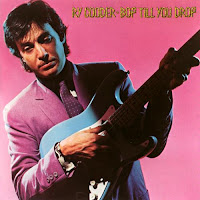The Arizona Diamondbacks' 1-0 loss to the Los Angeles Dodgers tonight was as gut-wrenching as it was predictable. Pitcher Dan Haren put in a stellar performance for eight innings, but the offense couldn't plate a single run. That's nine losses in a row, and it almost seems like the team is inventing ways to lose.
Tonight, manager A.J. Hinch had his number 8 hitter, catcher Chris Snyder, bunt left fielder Conor Jackson over to second base, so that hot-hitting pitcher Haren could drive Jackson in. That's the kind of move you make when your pitcher has a .400 batting average and your team has lost eight in a row.
Like that move on the field, the front office made a similar desperation move, announcing a deal for pitcher Dontrelle Willis. This is a pitcher who was designated for assignment after going 2-8 in 101 innings with a 6.86 ERA in three seasons with the Detroit Tigers. This season may have shown a slight improvement, with a 4.98 ERA and 1-2 record in nine games, but it wasn't enough for the Tigers to keep him, despite being on the hook for about $8 million in salary to him this year. The Diamondbacks reportedly get to take a chance on Willis for a bargain basement price of $266,000 and the trade of pitcher Billy Buckner, who had a 0-3 record with an 11.08 ERA this season, so even a broken-down Willis is a serious upgrade.
However, even if Willis regains the phenomenal form that made him "the D-Train," the ace of the Florida Marlins staff in the 2003-2005 seasons, he's not a remedy for what ails this team.
If we're talking about making desperation moves to get a win, the front office should swallow its pride and reinstate the old uniforms, the ones this franchise won a World Series in. The team's merchandise sales may be up since adopting Sedona Red and the classless comic book lettering in 2007, but aside from that season, these unis -- which make the Diamondbacks look like way too many other red-clad teams in both leagues -- have brought the team nothing but woe.
With the old unis they went from last place to first in the 1998 and 1999 seasons, and it's true that with the new unis they went from last place in 2006, the last year they wore the old colors, to first place in 2007. (In 2006, they tied for last place with Colorado with 76-86 records.) However, aside from that good year, the team was second with a not-nearly-good-enough-for-the-wild-card 82-80 record in 2008 (and a fruitless effort to hold on to the lead the team, at barely .500, held most of that season because the rest of the division sucked as much as the Diamondbacks did) and has been a cellar dweller throughout 2009 and 2010.
In the first nine years of the franchise -- the years with the old uniforms -- the team finished first three times, that's 33 percent of the time. The team also placed last three times, 33 percent of the time. But since the new uniforms came in, they've finished in first place once, finished in last place once and are on track to finish in last place this year. Not only that, but ace pitcher Brandon Webb has been sidelined since opening day of 2009. Although not even his stellar 22-7 record in 2008 could rescue the team from being a weak .500 team, I think it's part of the curse of the red unis that's put him out of commission this year and last.
So end the curse, Diamondbacks execs. Bring back the old uniforms and honor the team's winning tradition.



